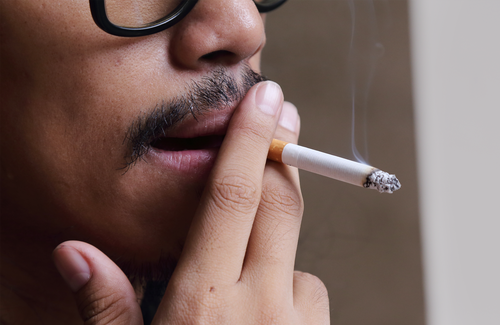
Targeted group therapy more than doubles the chances of long-term smoking cessation among people living with HIV, researchers from the United States report in the Journal of Acquired Immune Deficiency Syndromes. Quit rates were examined an average of three years after the initial smoking cessation intervention and showed that 10% of individuals randomised to take part in group therapy and 4% of individuals in the control group had stopped smoking.
This is the first ever study to show the long-term effectiveness of a smoking cessation intervention for people living with HIV. Its results are in marked contrast to two recent reports showing very low quit rates among people with HIV who were provided with brief advice about stopping smoking by their doctors.
“Reporting of long-term cessation outcomes of this duration are rare in the medical literature,” write the authors. “We found that at a mean of more than three years post-enrollment more group therapy participants versus controls had biochemically-verified 7-day point prevalence abstinence [and] significantly more had biochemically-verified 12-month point prevalence abstinence.”
HIV-positive people have much higher rates of smoking compared to their peers in the general population. Moreover, smoking-related illnesses are now a leading cause of death in people with HIV. Helping people living with HIV to stop smoking is therefore a priority, but there are questions about the long-term efficacy of interventions.
A group of researchers in the Bronx and Washington DC led by Dr Jonathan Shuter designed an intervention see if short-term (six week) intensive group therapy was effective at helping adult HIV-positive smokers quit in the short-term (the Positively Smoke Free study). Participants were randomised to the group therapy arm or a control arm, with participants in both arms receiving nicotine replacement patches. The group sessions were led by a social worker and an HIV-positive ex-smoker. Recruitment took place between 2014 and 2017.
Published separately, the study showed that the group therapy boosted biochemically confirmed quit rates at three months (13% vs 6.6%) but no significant difference in abstinence was observed at six months.
As a follow-up study, Dr Shuter and his colleagues wanted to see if the intervention had lasting benefits. They therefore designed a study involving participants from the original Bronx study sites only. Smoking cessation was assessed biochemically by analysing exhaled carbon monoxide and also by self-report. The researchers looked at baseline factors associated with long-term cessation.
The original Bronx study sample consisted of 342 individuals. Eleven had died since completion of the initial intervention. The investigators attempted to contact the remaining 331 individuals. This was successful in 194 cases. The study employed a rigorous methodology in which individuals who were not successfully re-contacted were regarded as smokers.
Late follow-up was completed a mean of 38 months after initial enrolment. The proportion of individuals using nicotine replacement therapy was similar for both the intervention and control groups.
This late follow-up showed the enduring benefits of the initial intervention. The seven-day biochemically confirmed smoking abstinence rate was twice as high among people who had taken part in group therapy compared to the controls (13% vs 7%; OR = 2.06; 95% CI, 0.96-4.41). The 12-month abstinence rates were 10% and 4%, respectively (OR = 2.61; 95% CI, 1.05-6.47, p = 0.03). A quarter of those in the intervention arm compared to 16% of controls had seven-day confirmed abstinence at any point during the follow-up study (OR = 1.76; 95% CI, 1.03-3.01, p = 0.04).
The primary end-point of the initial study was biochemically confirmed seven-day abstinence after six months of follow-up. Late follow-up of individuals who attained this outcome showed that confirmed seven-day abstinence rates were comparable for the intervention (39%) and control (45%) groups. However, analysis of those who hadn’t quit at the initial six-month follow-up point showed that group therapy participants were more likely to be confirmed abstinent at late follow-up compared to the controls (9% vs 1%; OR = 6.75; 95% CI, 1.48-30.7, p = 0.005).
Baseline factors associated with confirmed seven-day smoking abstinence in late follow-up included female gender, non-daily smoking, cannabis use, no cocaine use, lower nicotine dependence and an undetectable viral load.
The researchers also found that group therapy equipped participants with higher levels of smoking-cessation self-efficacy compared to the control group (p = 0.002).
“In this first study of prolonged follow-up of PLWH [people living with HIV] smokers who were exposed to tobacco treatment, we found that these participants who were allocated to the group therapy condition enjoyed higher abstinence rates approximately three years after the behavioral intervention,” conclude Dr Shuter and his colleagues. “These findings challenge the view that tobacco treatments in PLWH smokers produce short-term but not long-term cessation benefits, and suggest a role for later assessment in future studies of tobacco treatments in PLWH.”
Shuter J et al. Long-term follow-up of smokers living with HIV after an intensive behavioral tobacco treatment intervention. Journal of Acquired Immune Deficiency Syndromes, online ahead of print, 14 February 2020.

